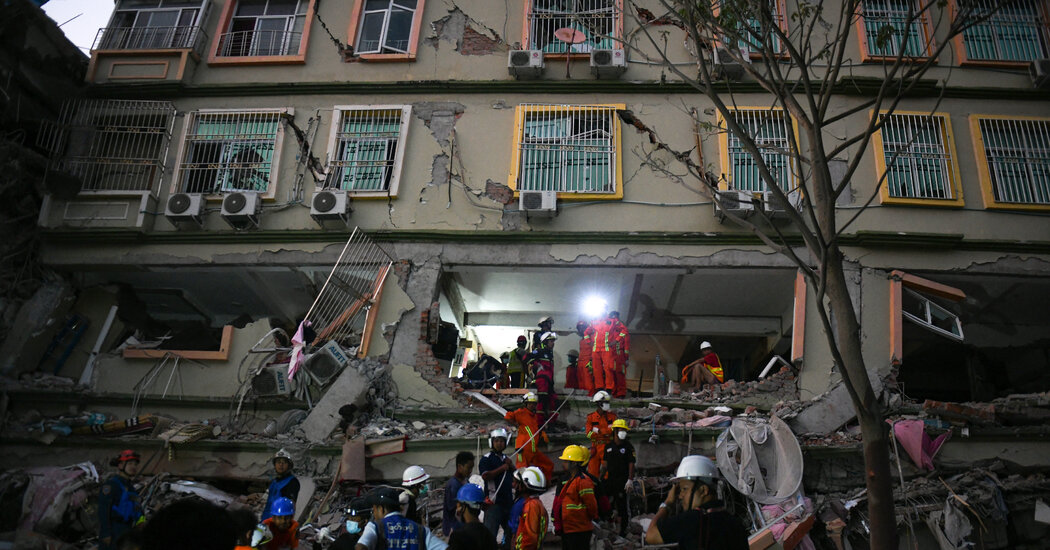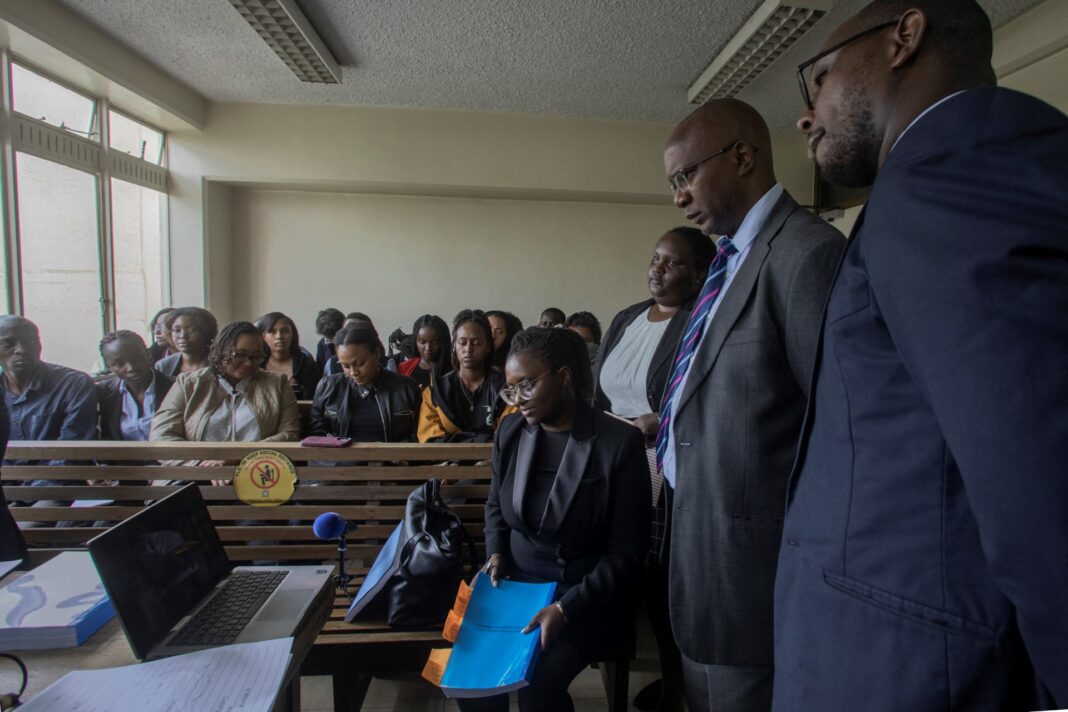It was marketed as a place with an “earthquake-resistant foundation.” The 12-story Sky Villa Condominium complex featured the largest rooftop bar in the central Myanmar city of Mandalay and a gym with state-of-the-art equipment.
Now it is a tomb.
Sky Villa, which was built in 2017, was one of the hardest-hit sites in the devastating earthquake on Friday that killed 2,719 people. Until last week, it stood as a symbol of this city’s rapid urbanization despite a four-year civil war.
When the earthquake ravaged Myanmar, five stories of the condominium slid underground. On Tuesday, the air reeked of decaying corpses, the stench made worse by the 100-degree heat, as desperate family members circled the ruins of the building looking for loved ones.
“Please speed up!” shouted Sai Myo Tun, who was searching for his sister, to volunteers in yellow hard hats and Chinese rescue workers scrambling to untangle the mound of concrete, debris, and steel. “My sister can still be alive if you speed up.”
Mr. Sai Myo Tun said his sister, who is three months pregnant, and her husband were trapped under the building. He said his sister had bought an apartment in Sky Villa last year. It is not known how many other people may be under the ruins.
“The rescue teams say there may not be any survivors left,” he said. “But I’m still holding on to hope.”
In recent years, Mandalay has been the site of a building boom, its fancy nightclubs and rising apartment blocks a sign of increased social mobility. A center of Buddhist culture and the last royal capital before the kingdom was annexed by the British Empire in 1885, it is a sprawling city of about 1.5 million and home to multiple religions and ethnicities. That includes many Chinese who arrived in the 20th century.
Since the army seized power in a coup four years ago, it has also emerged as an epicenter of resistance.
Today, it is a city destroyed. On Tuesday, a gold mine collapsed in Mandalay’s Singu township, killing 27, according to Myanmar Rescue Let Pan Hla, a local group. For days, volunteers have been combing through the rubble of collapsed buildings with their bare hands. Heavy machinery finally arrived on Saturday with a rescue team from China.
“The smell of decomposing bodies is getting stronger, so I don’t think there will be any survivors,” said Kyaw Gyi, a volunteer helping with rescue efforts at Sky Villa. He said on Tuesday morning that a cat made it out alive, but no human survivors had been found. “I estimate that at least 100 people are still inside.”
Bananas had been placed on a table near the ruins of the condominium, as prayer offerings.
Daw Thet Tin, who said her daughter and granddaughter are trapped under the building, has kept vigil at a nearby monastery.
“Lin Lin, dear, Mama is right here!” she shouted in the direction of the building. “The rescue teams are working to save you, stay strong!”
Ms. Thet Tin said she had not left the monastery since the day of the earthquake. “Every day, I pray to Buddha for them,” she said.
The destruction in Mandalay has been widespread. An analysis of Mandalay by Microsoft’s AI for Good Lab showed 515 buildings were 80 percent to 100 percent damaged, and another 1,524 were 20 percent to 80 percent damaged. It was not clear what percentage of the city’s buildings those numbers represented.
Rural parts of Mandalay have been ignored for days as rescue teams focus on the downtown areas. Some of these are impoverished areas where Muslims, a minority in predominantly Buddhist Myanmar, are concentrated, aid groups say.
“They’re not receiving any support or aid, even though there’s been a lot of deaths there as well,” said Melody Crisp of Thr5ve, a nonprofit helping displaced communities.
Ms. Crisp said that in parts of Mandalay, the authorities were telling people to return home by 10 p.m. and threatening forced military service if they didn’t comply, citing her contacts in the city.
Families are sleeping on sidewalks in the city, swarmed by mosquitoes at night. There are fears that clean water and food could soon run out.
Haider Yaqub, the Myanmar country director for Plan International, a child rights organization, has been interviewing residents to assess what their needs are. He said they desperately need shelter and fuel to help with rescue efforts.
Many of the collapsed structures were some of the country’s historic and religious sites such as mosques, pagodas and monasteries. In one video, people wailed as they watched the top of a monastery crumble.
“In Burmese culture, especially in Buddhist superstition, when a pagoda breaks from the tip, that’s a very bad omen,” said Min Zaw Oo, executive director at the Myanmar Institute for Peace and Security, a think tank.
Many people in Mandalay did not want to wait to find out what else fate had in store for them. The daily aftershocks have scared them, and in recent days, many left town.


